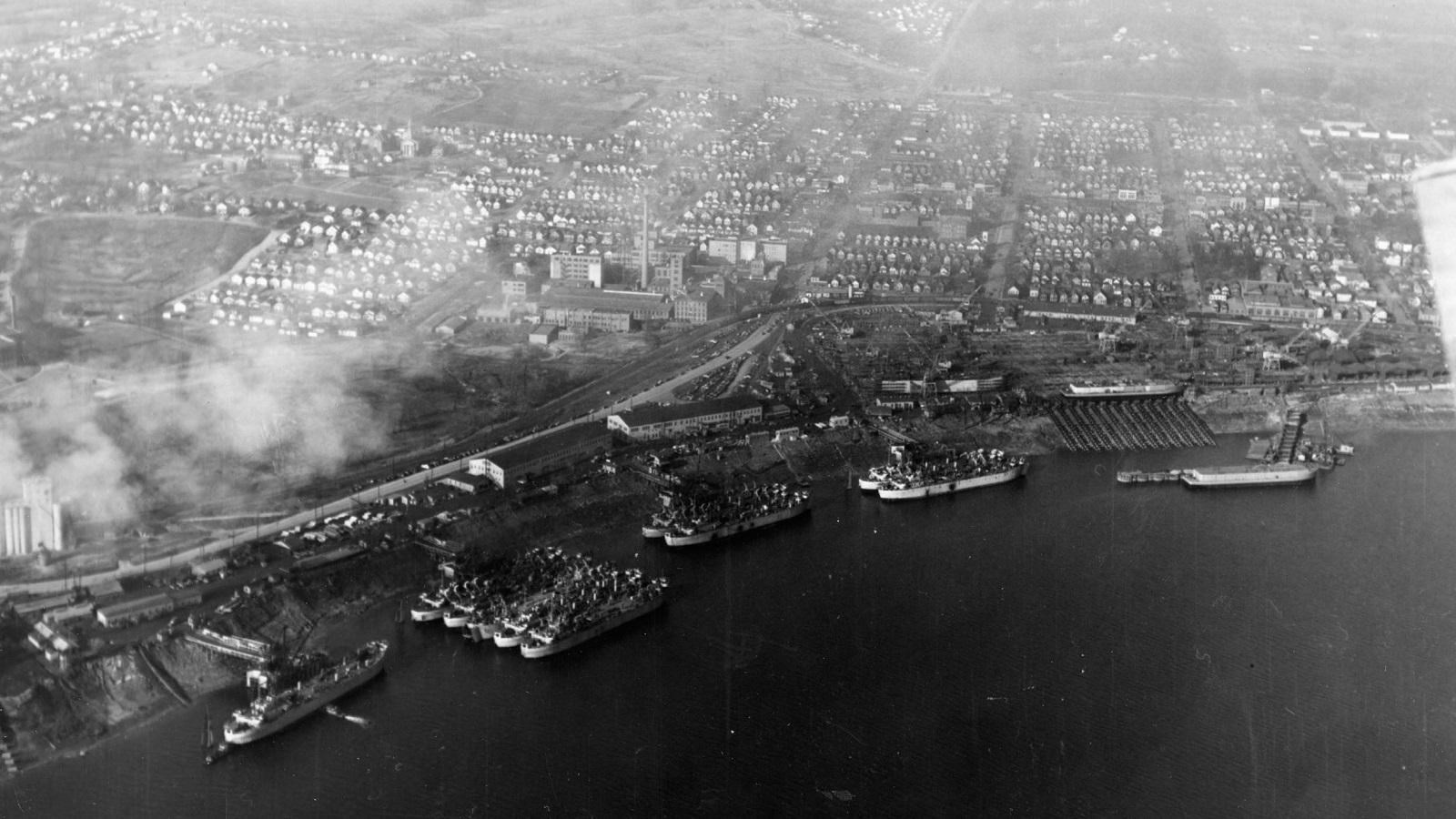Last updated: September 21, 2023
Place
Evansville, Indiana

US Navy, 9th Naval District, Nov. 25, 943
American World War II Heritage City
World War II changed Evansville into a leading defense manufacturer, resulting in 80 factories transitioning to war production and manufacturing 330 different goods for the war effort. The military recognized the high production levels achieved by awarding 15 businesses in the region with Army-Navy “E” Awards. Factories recruited thousands of workers to meet high demand. As a result, employment dramatically increased from 18,000 in 1940 to 60,000 by the middle of the war.
In January 1942, Chrysler started producing military supplies and hired some five thousand new staff. Along with assembling airplane wings and tail surfaces, Chrysler manufactured three billion+ rounds of .45 caliber ammunition.
In February 1942, the Department of Navy constructed the Missouri Valley Bridge & Iron Co. Shipyard, also called the Evansville Shipyard. Placed along the Ohio River, the forty-acre plant built 300 feet by 50 feet wide landing ship tanks (LST). Shift workers maintained rapid production throughout the war, resulting in one ship every four days in 1944 and a total of 167 LSTs produced by February 1945. This achievement along with the additional manufacturing of 13 ammunition lighters and 17 oceangoing barges made the Evansville Shipyard the “largest inland producer of oceangoing ships.”
In March 1942, the Republican Aviation Company built an aircraft factory in the northern part of the city. The plant hired 5,000 employees, half of whom were women, who worked around the clock and manufactured 6,242 Thunderbolts by 1945.
Evansville factories also produced food, clothing, medicine and other consumer products for service people and citizens. Mead Johnson and Company made burn and infection medication, Shane Manufacturing produced military uniforms, and Bootz Manufacturing manufactured gasoline field stoves. Meat plants operated by Swift & Company and Weil Packing, and the Miller-Parrott Baking company supplied military food rations.
Evansville undertook other patriotic activities, most notably war bond and scrap drives. Successful fundraising efforts were supported by local shipbuilders, public school children, and a women’s committee organized phone banks. Citizens contributed $124,700,000 in county war bound sales. Scrap drives organized by the city collected 700 tons of salvage. Many women volunteered at Evansville’s Red Cross Canteen, which served 1.6 million soldiers throughout the war. It provided an average 1,500 soldiers per day with food donated by local churches, businesses, and farmers.
The military expansion shaped the wartime experiences of Evansville citizens. Evansville College contracted with the Civil Aeronautics Authority, the FAA predecessor, to provide pilot training programs. The school trained 265 civilian pilots and 335 U.S. Navy pilots. The U.S. Army Air Force used Evansville Airport to house its Modification Center, which modified and upgraded aircraft either manufactured in Evansville or flown in from other locations.
Local museums and memorials such as the Evansville Wartime Museum, USS LST Ship Memorial, and the Evansville Museum, preserve and commemorate the wartime contributions of the city through yearly cultural events. The campus of Evansville College stands as a memorial to the service and sacrifice of those who served in World War II pilot training program.
